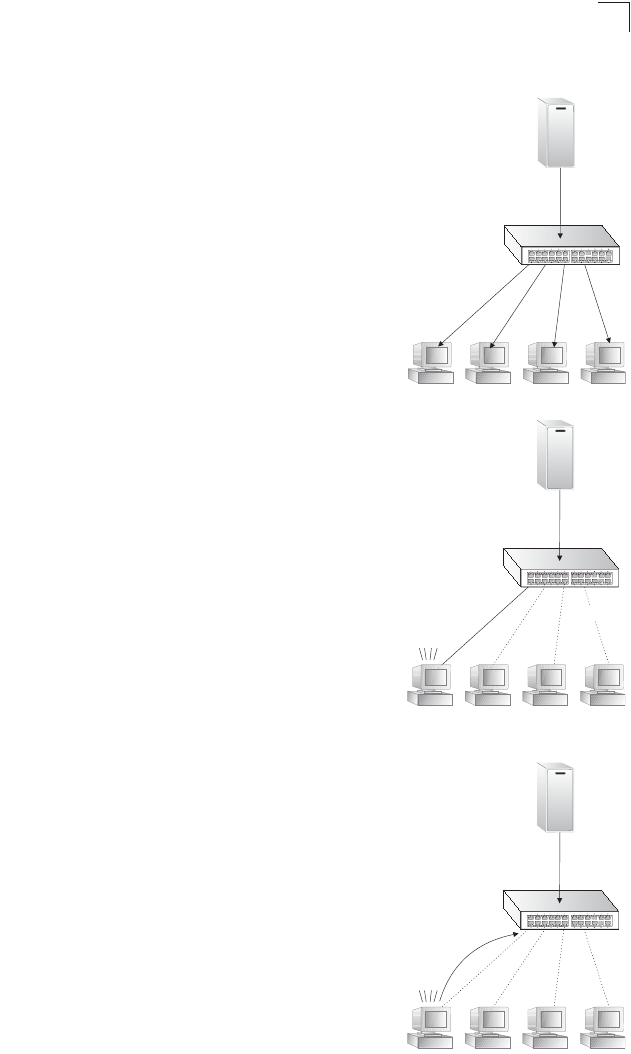
Multicast Routing
3-265
3
Command Usage
Broadcasting periodically floods the network with
traffic from any active multicast server. If IGMP
snooping is disabled, multicast traffic is flooded to
all ports on the router. However, if IGMP snooping is
enabled, then the first packet for any source group
pair is flooded to all DVMRP downstream
neighbors. If a packet is received through an
interface that the router determines to be the
shortest path back to the source (based on interface
metrics), then the router forwards the packet on all
interfaces except for the incoming interface.
The router will transmit a prune message back out
the receiving interface (i.e., the parent interface) to
its upstream neighboring router if there are no group
members on its child interfaces. A prune message
tells the upstream router to stop forwarding packets
for a particular source-group pair for the prune
lifetime.
If the router that previously sent a prune message
now discovers a new group member on one of its
connections, it sends a graft message to the
upstream router. When an upstream router receives
this message, it cancels the prune message. If
necessary, graft messages are propagated back
toward the source until reaching the nearest live
branch in the multicast tree.
The global settings that control the prune and graft
messages (i.e., prune lifetime) should be configured
to the same values on all routers throughout the
network to allow DVMRP to function properly.
However, if you encounter problems in maintaining
a multicast flow, then you may need to modify the
protocol variables which control the exchange of
topology information between DVMRP routers; such
as the probe interval, neighbor timeout or report
interval.
Command Attributes
• DVMRP Protocol – Enables/disables DVMRP
globally. (Default: Disabled)
• Probe Interval – Sets the interval for sending
neighbor probe messages to the multicast group
address for all DVMRP routers. Probe messages
are sent to neighboring DVMRP routers from
source
flooding
potential
hosts
pruning
source
grafting
source


















